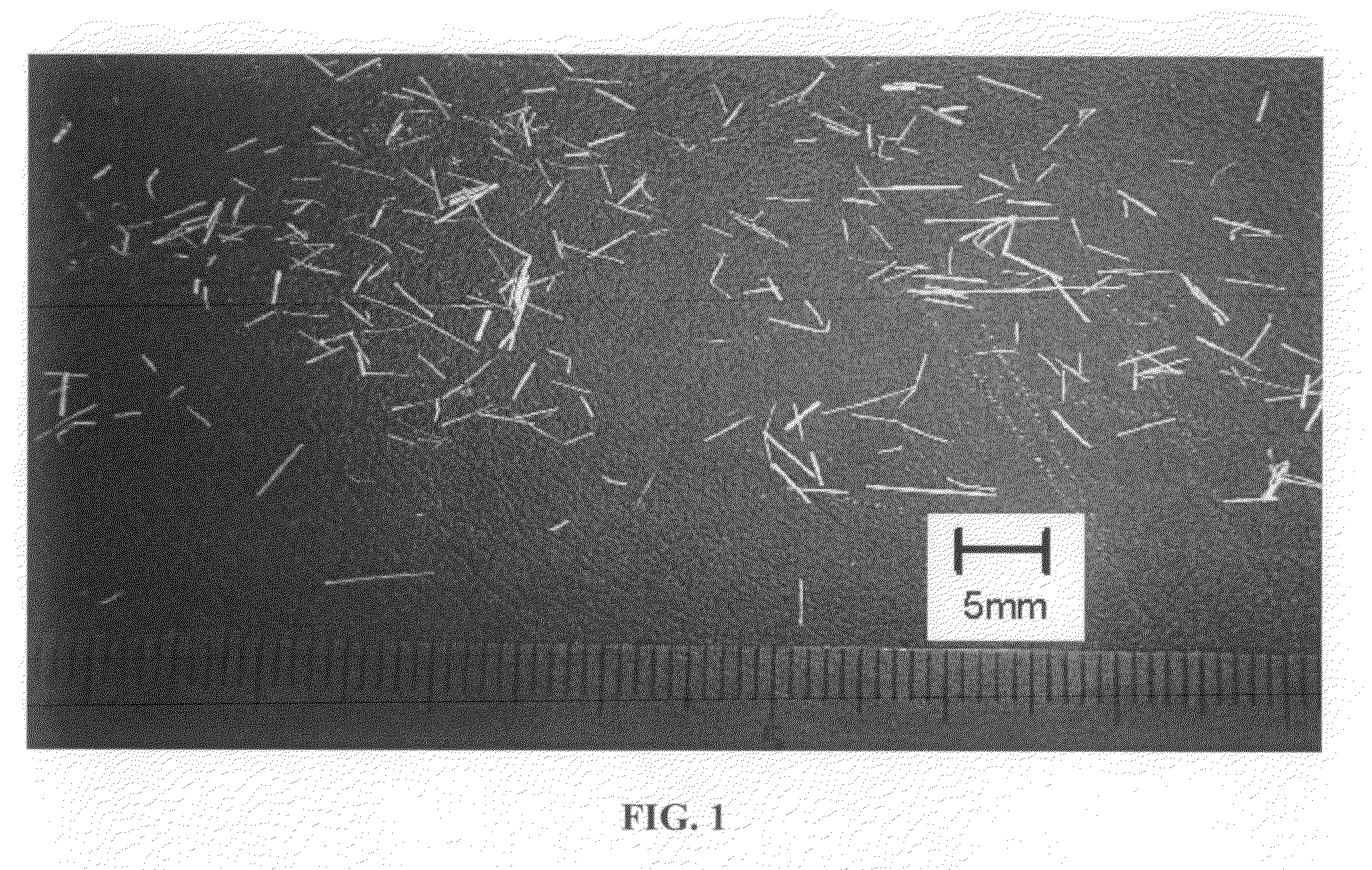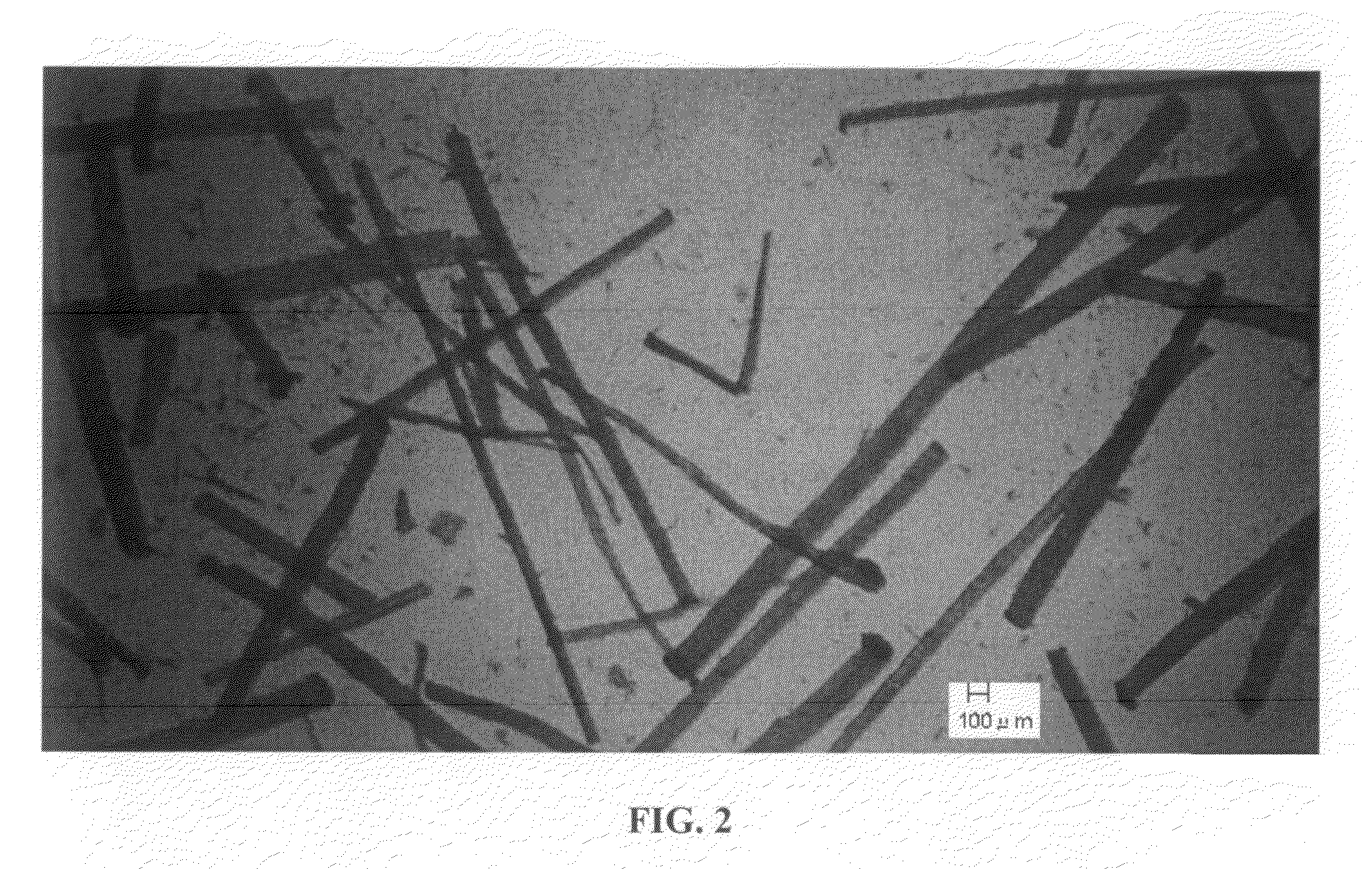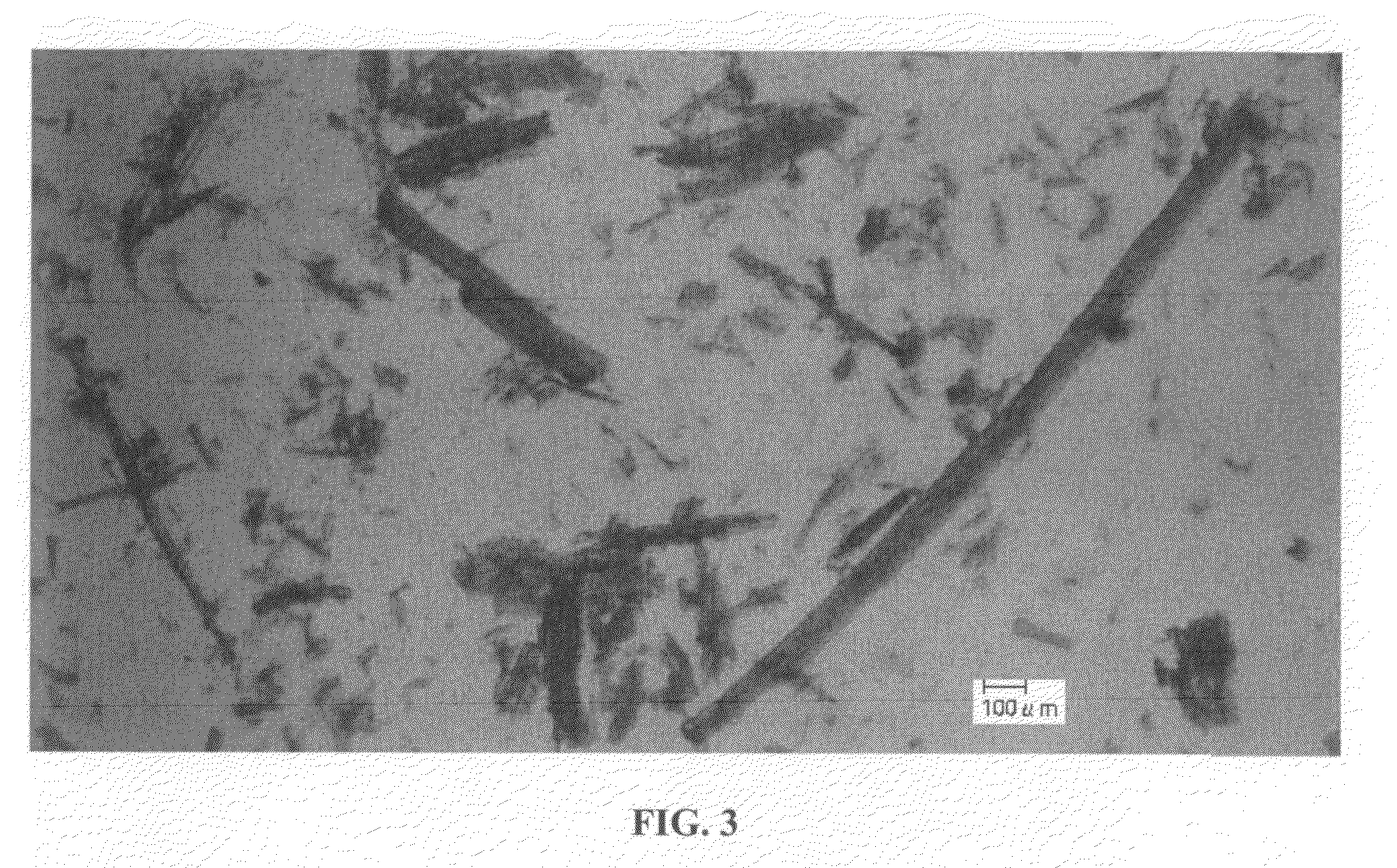Kenaf-fiber-reinforced resin composition
a fiber reinforced resin and composition technology, applied in the field of fiber reinforced resin composition, can solve the problems of poor molding processability and reduced fluency of composition, and achieve the effect of improving mechanical strength and reducing biodegradability
- Summary
- Abstract
- Description
- Claims
- Application Information
AI Technical Summary
Benefits of technology
Problems solved by technology
Method used
Image
Examples
example 1
[0081]As a kenaf fiber, a bast fiber (kenaf fiber prepared only from bast) was used. The kenaf fiber had an average fiber length of 3 to 5 mm (number average fiber length of the fibers excluding fragments (those less than 50 μm in the length in the longitudinal direction)). FIG. 1 is a micrograph of the bast fiber (kenaf fiber prepared only from bast) used in this Example, and FIG. 2 is a micrograph of the same bast fiber at different magnification.
[0082]10% by mass of this bast fiber and 90% by mass of polylactic acid (available from Shimadzu Corporation, Lacty 9030) were each dried at 100° C. for 5 hours and melt-kneaded in a kneader (S1 Kneader made by KURIMOTO, LTD. kneading temperature: 180° C.) to give pellets. The obtained pellets were dried at 100° C. for 5 hours and molded in an injection molding machine (made by TOSHIBA MACHINE CO., LTD, EC20P-0.4A, molding temperature: 180° C., metal mold temperature: 25° C.), to form test pieces (125×13×3.2 mm).
[0083]The test pieces were...
examples 2 to 4
[0084]The ratio of the bast fiber to the polylactic acid in Example 1 was changed to bast fiber / polylactic acid=15 / 85, 20 / 80, 30 / 70 (all in mass ratio), and the other conditions were the same as in Example 1. The reinforcing effect of bast fiber on polylactic acid was evaluated in the same manner as in Example 1, and the results are shown in Table 1.
[0085]As shown in Table 1, it has been revealed that by incorporating the bast fiber, the flexural modulus of polylactic acid can be improved in the same level of kneadability as that of polylactic acid, and in particular, the heat distortion temperature at high loads can be greatly improved. In addition, as shown in Table 1, in the case of polylactic acid containing bast fiber, the flexural modulus of the polylactic acid could be improved with the same level of kneadability as that of polylactic acid. In particular, it has been found that when the content of the bast fiber was 15% by mass or more, the heat distortion temperature (heat r...
example 5
[0086]A whole stem fiber prepared from bast and xylem was used instead of the bast fiber in Example 1. The conditions were otherwise the same as in Example 1 and the results are shown in Table 1.
[0087]FIG. 3 is a micrograph of the whole stem fiber used. The whole stem fiber had an average fiber length of 100 to 200 μm, but the fiber also contained long fibers of 1 mm or more. The long fibers came from bast. The sample using whole stem fiber also had a reinforcing effect indicated by the flexural modulus equivalent to that of bast fiber as shown in Table 1. On the other hand, the improvement in the heat resistance indicated by the heat distortion temperature was not as excellent as that of the bast fiber. Although studies are not complete, it is assumed that the bast fiber which is a long fiber of mm-level effectively contributed to the improvement in the heat resistance.
PUM
| Property | Measurement | Unit |
|---|---|---|
| length | aaaaa | aaaaa |
| length | aaaaa | aaaaa |
| diameter | aaaaa | aaaaa |
Abstract
Description
Claims
Application Information
 Login to View More
Login to View More - R&D
- Intellectual Property
- Life Sciences
- Materials
- Tech Scout
- Unparalleled Data Quality
- Higher Quality Content
- 60% Fewer Hallucinations
Browse by: Latest US Patents, China's latest patents, Technical Efficacy Thesaurus, Application Domain, Technology Topic, Popular Technical Reports.
© 2025 PatSnap. All rights reserved.Legal|Privacy policy|Modern Slavery Act Transparency Statement|Sitemap|About US| Contact US: help@patsnap.com



